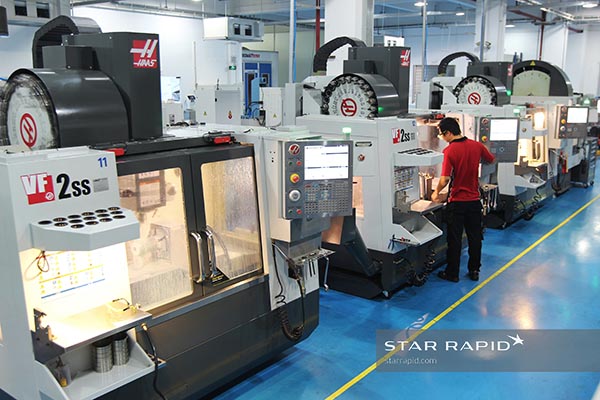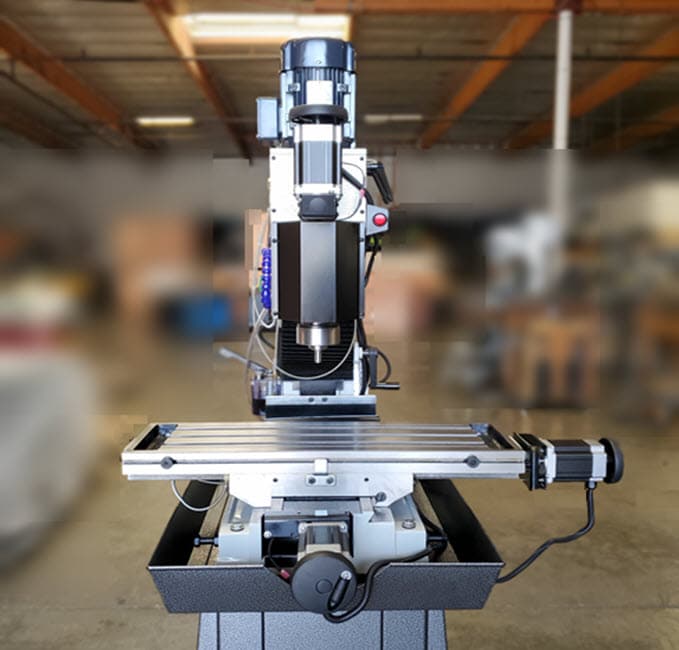Table of Contents
Have you ever wondered if it’s possible to CNC mill with naked edges? This question has intrigued many in the machining community, and for good reason. The ability to mill without the need for clamping or fixturing would revolutionize the industry, allowing for faster and more efficient production.
While some may argue that it’s impossible to CNC mill with naked edges, others believe it’s a possibility with the right technology and techniques. In this article, we’ll explore the concept of naked edge milling and discuss the potential benefits and drawbacks of this innovative technique. So, buckle up and let’s dive into the world of CNC milling with naked edges!
Yes, you can CNC mill with naked edges, but it is not recommended. The edges of the material being milled are left exposed without any support, which can cause the material to warp or become damaged during the milling process. It is best to use clamps or a vise to secure the material and prevent any potential damage or errors during the milling process.
Can You CNC Mill With Naked Edges?
CNC milling is a popular method for creating precise and intricate parts for various industries. It involves the use of computer-controlled machines to remove material from a workpiece and produce the desired shape. But what happens when you have a part with naked edges? Can you still use CNC milling to produce the required shape? Let’s find out.
What are Naked Edges?
Naked edges, also known as sharp edges, are the edges of a part that have not been deburred or chamfered. These edges are typically left behind after a part has been cut or machined, and they can be sharp or jagged. Naked edges can be a safety hazard, as they can cause injury to people handling the part or damage to other parts during assembly.
In most cases, naked edges need to be removed or smoothed out to ensure the part is safe to handle and use. However, this can be a challenge when it comes to CNC milling.
Challenges of CNC Milling Naked Edges
Naked edges can pose several challenges when it comes to CNC milling. Firstly, the sharp edges can damage the cutting tool, leading to premature tool wear and breakage. This can result in increased costs and downtime for the machining process.
Secondly, naked edges can also cause issues with the surface finish of the part. The sharp edges can leave marks or gouges on the surface, which can be difficult to remove. This can affect the overall quality and functionality of the part.
Options for CNC Milling Naked Edges
There are several options available for CNC milling naked edges. One option is to use a deburring tool to remove the sharp edges before machining. This can be effective, but it can also be time-consuming and may require additional equipment.
Another option is to use a special type of cutting tool that is designed to handle sharp edges. These tools are typically made from harder materials and have a more robust design to withstand the impact of sharp edges.
Benefits of CNC Milling Naked Edges
While naked edges can pose some challenges, there are also benefits to CNC milling parts with naked edges. One of the main benefits is that it can save time and money in the overall production process. By eliminating the need for deburring or chamfering, you can reduce the number of steps required to produce a part.
Additionally, CNC milling naked edges can also be useful in situations where a chamfer or deburr would interfere with the functionality of the part. For example, in some medical devices, sharp edges are necessary to create a secure fit with other parts.
CNC Milling Naked Edges vs Deburring/Chamfering
When deciding whether to CNC mill naked edges or deburr/chamfer a part, there are several factors to consider. If the naked edges are not a safety hazard and do not affect the functionality of the part, then CNC milling may be the better option. This can save time and money in the production process.
However, if the naked edges pose a safety risk or affect the functionality of the part, then deburring or chamfering may be necessary. This can ensure the part is safe to handle and use, and can also improve the overall quality and functionality of the part.
Conclusion
In conclusion, CNC milling with naked edges is possible, but it does pose some challenges. While there are benefits to CNC milling naked edges, such as saving time and money, it is important to consider the safety and functionality of the part. If the naked edges pose a safety risk or affect the functionality of the part, then deburring or chamfering may be necessary.
Freequently Asked Questions
Can You CNC Mill With Naked Edges?
Yes, you can use naked edges for CNC milling, but it is not recommended. The reason is that naked edges do not provide enough support for the material being milled, which can result in the material breaking or chipping. It is best to use clamps or other forms of support to ensure the material remains stable during the milling process.
Additionally, naked edges can also cause issues with the CNC machine itself. The edges can catch on the machine’s moving parts, causing damage or even bringing the machine to a halt. For these reasons, it is always better to use clamps or other forms of support when CNC milling.
What Materials Can Be CNC Milled?
CNC milling can be used to work with a wide range of materials. Some of the most common materials used in CNC milling include metals such as aluminum, brass, copper, and steel. Other materials that can be milled include plastics, woods, and composites.
The type of material used will depend on the specific project and its requirements. Some materials are better suited for certain types of milling processes, so it is important to choose the right material for the job. Additionally, the material’s properties, such as its hardness and density, will also affect the milling process and the results obtained.
What Is the Difference Between 2D and 3D CNC Milling?
2D CNC milling is a process that involves cutting two-dimensional shapes out of a material. This process is typically used for creating flat parts, such as circuit boards or signs. 3D CNC milling, on the other hand, involves cutting three-dimensional shapes out of a material. This process is used to create more complex parts, such as molds or sculptures.
The difference between 2D and 3D milling lies in the number of axes used in the process. 2D milling typically uses two axes, while 3D milling uses three or more axes. This allows for more complex shapes to be created, as the milling machine can move in multiple directions simultaneously.
What Is the Maximum Size That Can Be CNC Milled?
The maximum size that can be CNC milled will depend on the specific machine being used. CNC milling machines come in a range of sizes, from small desktop machines to large industrial-sized machines. The size of the machine will determine the size of the material that can be milled.
Additionally, the type of milling process used will also affect the maximum size of the material that can be milled. For example, some machines may be able to mill larger parts in 2D, while others may be able to create larger 3D parts. It is important to choose the right machine for the job to ensure the desired results are obtained.
What Are Some Common Applications of CNC Milling?
CNC milling is used in a variety of applications across many industries. Some common applications include creating molds for injection molding, creating parts for the aerospace industry, and creating prototypes for product development. CNC milling is also commonly used in the automotive industry for creating parts such as engine blocks and transmission components.
Other applications of CNC milling include creating parts for medical devices, creating custom jewelry and watches, and creating parts for the electronics industry. The versatility of CNC milling makes it a valuable tool in many industries, allowing for precise and complex parts to be created quickly and efficiently.
In conclusion, the answer to the question “Can you CNC mill with naked edges?” is a resounding no. Attempting to mill without proper edge preparation can result in a host of issues, including tool breakage, inaccurate cuts, and damage to the workpiece.
To achieve high-quality CNC milling results, it’s crucial to properly prepare the edges of your stock material. This can include deburring, chamfering, or even facing the edges to ensure a smooth and clean surface for the tool to engage with.
Investing time and effort into edge preparation can make all the difference in the success of your CNC milling project. By taking the necessary steps to prepare your edges, you’ll be able to achieve precise and accurate cuts while also extending the life of your cutting tools.
In summary, while it may be tempting to skip the edge preparation step, doing so can have disastrous consequences for your CNC milling project. Take the time to properly prepare your edges, and you’ll be rewarded with high-quality results that meet your exact specifications.
Request a quote today!
[contact-form-7 id="1578" title="Contact form"]
Please compress the file into a ZIP or RAR file before uploading. Alternatively, send through your RFQ by email.
enquires@unitymanufacture.com





